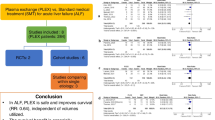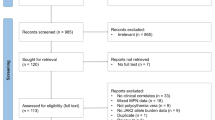Abstract
Background and Objectives
Effective management of immunosuppressants is extemely important to improve prognosis of heart transplant recipients. We aim to investigate the effects of cytochrome P450 (CYP) 3A5 (rs776746) single nucleotide polymorphisms (SNPs) on serum tacrolimus concentrations/doses (C/Ds, ng/mL per mg/kg) and long-term prognosis in Chinese heart transplant recipients.
Methods
We detected the CYP3A5 SNPs of 203 consecutive Chinese heart transplant recipients between August 2005 and July 2012, and 55 of them who received tacrolimus-based immunosuppressive therapy were enrolled in this study. The tacrolimus C/Ds at 1, 3, 6, 12, 24 and 36 months after transplantation were routinely calculated. X-ray-guided endomyocardial biopsies (EMBs) were performed at 1, 3 and 6 months after heart transplantion to evaluate acute rejection degrees. All participants were then followed up annually until May 2018. The designed primary endpoint was all-cause mortality.
Results
In 55 heart transplant recipients (43 males and 12 females), CYP3A5 non-expressors (CYP3A5*3/*3, n = 40) had significantly higher tacrolimus C/Ds than expressors (CYP3A5*1/*3, n = 15) at all time points (P < 0.001). Chi-squared test showed no significant differences in EMB-proven acute rejections between the two groups within 6 months after heart transplantion. The median follow-up period was 94.7 months, and eight patients died. Kaplan–Meier analysis showed CYP3A5 expressors tend to have higher mortality than non-expressors (20% vs 12.5%, log-rank: P = 0.314).
Conclusions
CYP3A5 SNPs affect tacrolimus pharmacokinetics in Chinese heart transplant recipients, and non-expressors have higher tacrolimus C/Ds. In addition, expressors tend to have a worse long-term prognosis than non-expressors.


Similar content being viewed by others
References
Christie JD, Edwards LB, Kucheryavaya AY, Benden C, Dobbels F, Kirk R, et al. The Registry of the International Society for heart and lung transplantation: twenty-eighth adult lung and heart-lung transplant report–2011. J Heart Lung Transplant. 2011;30(10):1104–22.
Lindholm A, Kahan BD. Influence of cyclosporine pharmacokinetics, trough concentrations, and AUC monitoring on outcome after kidney transplantation. Clin Pharmacol Ther. 1993;54(2):205–18.
Kahan BD, Keown P, Levy GA, Johnston A. Therapeutic drug monitoring of immunosuppressant drugs in clinical practice. Clin Ther. 2002;24(3):330–50.
Staatz CE, Tett SE. Clinical pharmacokinetics and pharmacodynamics of tacrolimus in solid organ transplantation. Clin Pharmacokinet. 2004;43(10):623–53.
Zhang X, Liu ZH, Zheng JM, Chen ZH, Tang Z, Chen JS, et al. Influence of CYP3A5 and MDR1 polymorphisms on tacrolimus concentration in the early stage after renal transplantation. Clin Transplant. 2005;19(5):638–43.
Kuehl P, Zhang J, Lin Y, Lamba J, Assem M, Schuetz J, et al. Sequence diversity in CYP3A promoters and characterization of the genetic basis of polymorphic CYP3A5 expression. Nat Genet. 2001;27(4):383–91.
Kamdem LK, Streit F, Zanger UM, Brockmoller J, Oellerich M, Armstrong VW, et al. Contribution of CYP3A5 to the in vitro hepatic clearance of tacrolimus. Clin Chem. 2005;51(8):1374–81.
Deininger KM, Vu A, Page RN, Ambardekar AV, Lindenfeld J, Aquilante CL. CYP3A pharmacogenetics and tacrolimus disposition in adult heart transplant recipients. Clin Transplant. 2016;30(9):1074–81.
Diaz-Molina B, Tavira B, Lambert JL, Bernardo MJ, Alvarez V, Coto E. Effect of CYP3A5, CYP3A4, and ABCB1 genotypes as determinants of tacrolimus dose and clinical outcomes after heart transplantation. Transplant Proc. 2012;44(9):2635–8.
Gijsen V, Mital S, van Schaik RH, Soldin OP, Soldin SJ, van der Heiden IP, et al. Age and CYP3A5 genotype affect tacrolimus dosing requirements after transplant in pediatric heart recipients. J Heart Lung Transplant. 2011;30(12):1352–9.
Lesche D, Sigurdardottir V, Setoud R, Oberhansli M, Carrel T, Fiedler GM, et al. CYP3A5*3 and POR*28 genetic variants influence the required dose of tacrolimus in heart transplant recipients. Ther Drug Monit. 2014;36(6):710–5.
Kniepeiss D, Renner W, Trummer O, Wagner D, Wasler A, Khoschsorur GA, et al. The role of CYP3A5 genotypes in dose requirements of tacrolimus and everolimus after heart transplantation. Clin Transplant. 2011;25(1):146–50.
Berry GJ, Brunt EM, Chamberlain D, Hruban RH, Sibley RK, Stewart S, et al. A working formulation for the standardization of nomenclature in the diagnosis of heart and lung rejection: Lung Rejection Study Group. The International Society for Heart Transplantation. J Heart Transplant. 1990;9(6):593–601.
Stewart S, Winters GL, Fishbein MC, Tazelaar HD, Kobashigawa J, Abrams J, et al. Revision of the 1990 working formulation for the standardization of nomenclature in the diagnosis of heart rejection. J Heart Lung Transplant. 2005;24(11):1710–20.
Tang HL, Xie HG, Yao Y, Hu YF. Lower tacrolimus daily dose requirements and acute rejection rates in the CYP3A5 nonexpressers than expressers. Pharmacogenet Genomics. 2011;21(11):713–20.
Rong G, Jing L, Deng-Qing L, Hong-Shan Z, Shai-Hong Z, Xin-Min N. Influence of CYP3A5 and MDR1(ABCB1) polymorphisms on the pharmacokinetics of tacrolimus in Chinese renal transplant recipients. Transplant Proc. 2010;42(9):3455–8.
Glowacki F, Lionet A, Buob D, Labalette M, Allorge D, Provot F, et al. CYP3A5 and ABCB1 polymorphisms in donor and recipient: impact on tacrolimus dose requirements and clinical outcome after renal transplantation. Nephrol Dial Transplant. 2011;26(9):3046–50.
Renders L, Frisman M, Ufer M, Mosyagin I, Haenisch S, Ott U, et al. CYP3A5 genotype markedly influences the pharmacokinetics of tacrolimus and sirolimus in kidney transplant recipients. Clin Pharmacol Ther. 2007;81(2):228–34.
Gervasini G, Garcia M, Macias RM, Cubero JJ, Caravaca F, Benitez J. Impact of genetic polymorphisms on tacrolimus pharmacokinetics and the clinical outcome of renal transplantation. Transpl Int. 2012;25(4):471–80.
Pallet N, Etienne I, Buchler M, Bailly E, Hurault DLB, Choukroun G, et al. Long-term clinical impact of adaptation of initial tacrolimus dosing to CYP3A5 genotype. Am J Transplant. 2016;16(9):2670–5.
Flahault A, Anglicheau D, Loriot MA, Thervet E, Pallet N. Clinical impact of the CYP3A5 6986A>G allelic variant on kidney transplantation outcomes. Pharmacogenomics. 2017;18(2):165–73.
Acknowledgements
Establishment of a Scientific Registration System for Heart Transplantation in China (2011-wy1A).
Author information
Authors and Affiliations
Corresponding author
Ethics declarations
Funding
This study was supported by the ‘Establishment of a Scientific Registration System for Heart Transplantation in China’ program (2011-wy1A).
Conflict of Interest
The authors report no relationships that could be construed as a conflict of interest.
Ethics Approval
All procedures in this study were in accordance with the 1964 Helsinki declaration and its amendments, and have got approval of the Ethics Committee of Fuwai Hospital.
Informed Consent
Written informed consent was obtained from patients, parents or care givers.
Rights and permissions
About this article
Cite this article
Liu, By., Chen, Wq., Chen, Zg. et al. The Effects of CYP3A5 Genetic Polymorphisms on Serum Tacrolimus Dose-Adjusted Concentrations and Long-Term Prognosis in Chinese Heart Transplantation Recipients. Eur J Drug Metab Pharmacokinet 44, 771–776 (2019). https://doi.org/10.1007/s13318-019-00563-x
Published:
Issue Date:
DOI: https://doi.org/10.1007/s13318-019-00563-x




